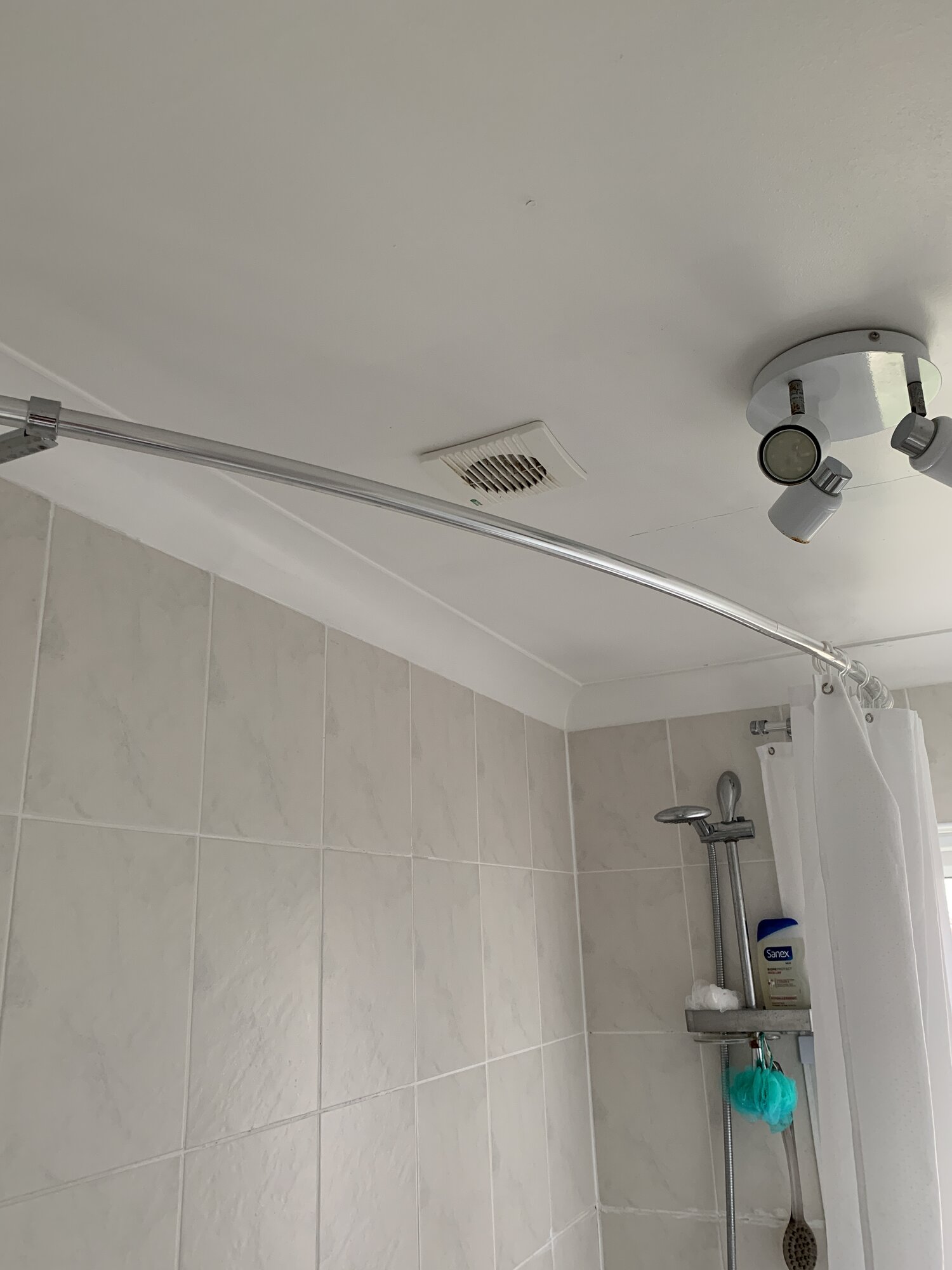Three houses, mothers, our old, and our new, our old house problems, mothers and new house no problem, so looked at why, mothers house wet room so no shower door or curtain, new house shower door seals at bottom of shower, old house shower over bath so massive gap at bottom of shower, and that is seems is the problem, if the air can circulate through the shower cubical or area, then all the moisture is drawn into the room, but if there is no door or curtain, then the air and more to point moisture in the air does not circulate, so only shower gets wet not rest of room.
Clearly this spills over to any extractor position, above the shower it removes moist air before it enters room, anywhere else, it draws moist air into the room.
Shower doors that seal either top or bottom again stop circulation, a shower curtain clearly does not seal and air circulates, if you allow air to circulate then it will take longer to remove that damp air.
What
@foxhole says is very true, with early building regulations it said the fan with a bathroom with a non opening window should have the ability to switch it on without the light, but this was dropped, fan on a PIR is better than fan on light as it works every time, however both mothers old house and this house we never use the fan and no problems with damp.
This house has old style central heating, the old C Plan, bathroom radiator and domestic hot water are thermo syphon or gravity, there is no TRV on the radiator and the towel rail radiator is working most of the time, so the room is always warm.
Any fan blowing air out of a room, can only work if air can also get into the room, cold air does not hold as much moisture as warm air, so if the replacement air comes from outside it will be drier than air from inside the house. Father-in-laws house was around 75% humidity because he had triple glazing and really well sealing doors, our old house same design, around 65% humidity, more air flow than his, and we cooked on electric not gas, mothers house more like 55% chimneys in house and doors with not thresh hold for wheel chair access did not seal as well, this house below 50% again chimney but open fire place, poor fitting loft lid.
If the house is humid then sucking in air from house will not help. Never seen humidity meter showing house so dry as here, at moment bedroom 47% temp 19.5°C and living room 43% temp 18.6°C. Weather high pressure at moment 1042 not normally that high. House size clearly also has a bearing on humidity, in general the smaller the house, the higher the humidity. I think our tumble drier with pipe through window in a unheated utility room must change the general humidity to other houses where we had a hole in the wall and tumble drier sucked in air heated by the central heating we have noticed the tumble drier in utility room does not need to run as long as in other house when sucking in centrally heated air.
It is no good looking at bathroom in isolation if the replacement air comes from rest of house. You show extractor, is there a vent in the door for air to be replaced? Or a gap under the bathroom door?







